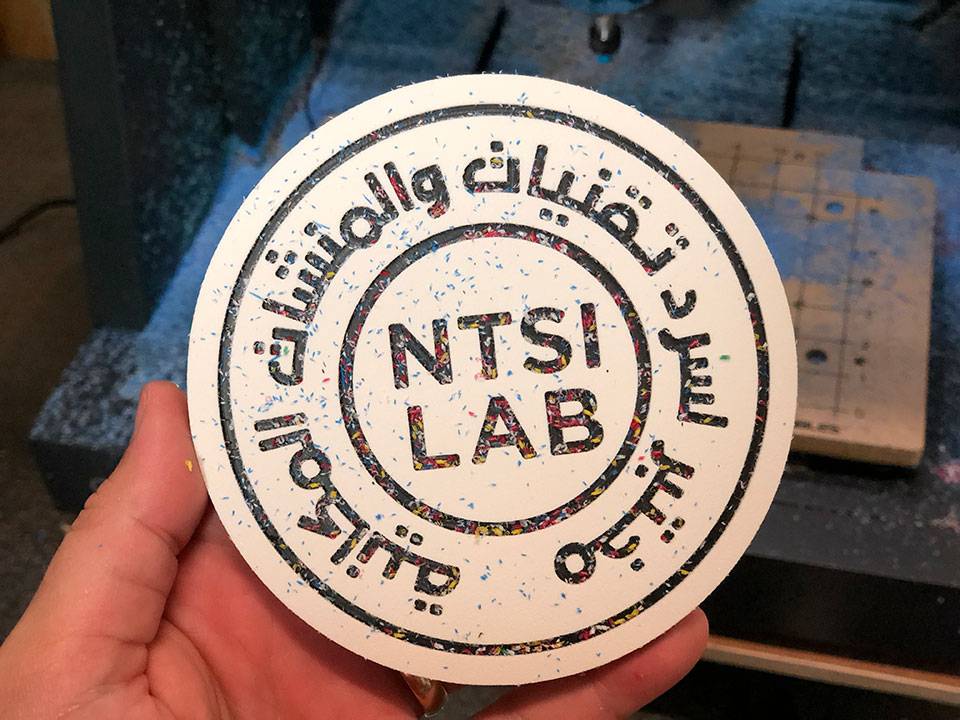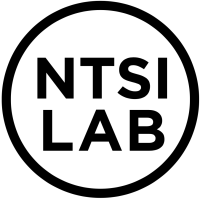Table of Contents
The Lab for Narrative Technologies and Spatial Installations

Check out the lab's website here:www.ntsi.info
The NTSI-Lab is a small interdisciplinary Design Research Lab in the Engineering Department of New York University Abu Dhabi (NYUAD). Within NYUAD Engineering Department’s research fields we focus on problems or questions in the realm of Information, Communication, and Electronic Systems (ICE ). While in Applied Research one observes the status quo, Design Research puts the focus on what ought to be.
Find information about collaborations, activities and open positions on the NTSI-website (www.ntsi.info).
At NTSI Lab we envision systems and spaces, and create and deploy innovative objects through design and engineering tools. While most engineering research labs are specialised in the use of abstract mathematical models, our goal is to generate representative scenarios and pioneer use-cases in form of technological prototypes for:
1. Products that do not yet exist. Our primary research focuses on technology semantics. We analyse the digital society and translate trends into new kinds of medial devices and technological artefacts. The focus is not only on technology, but on the integration of technology within society 2 under the following aspects:
- Relevance (substance and sustainability)
- Interdisciplinary (creative and unlimited)
- Respect (honesty and persistence)
- Sincerity (clarity and forthrightness)
- Multidimensionality (useful and effective)
- Adequacy (sensitive and economical)
- Quality (targeted and uncompromising)
Our secondary research focuses on the creation of artefacts on high user experiences (UX), intuitive user interfaces (UI) and Embodied Human Computer Interaction (eHCI) often in the context of Internet of Things (IoT), E-Textiles and Smart Materials.
We want to find answers to the following main questions:
- How would we like to live in the future?
- Which role will technology play in our future?
- Which impact will society have on creating new technologies?
- How can the virtual realm be transferred into the real world?
2. Site-specific installations for architectural spaces.
In a first step we analyse the basic elements of architectural spaces to understand its unique characteristics. We take into consideration implied facts like location, structure, materiality, layout and geometry, transition, hierarchy, light conditions etc., but also soft facts like its actual and future use, its aura, and its potential to host installations. We research the relationship of how architecture can be the frame for installations and how a space will potentially contribute to shape the form and format of an installation.
In a second step we focus on the development and integration of content related technologies. We explore the specific quality of a dedicated technology in combination with physical properties of objects and materials to create not only a site- but also a content specific installation. We are interested in exploring the correlation of a strong narrative character to be compiled with a highly technological character to create a performative presence in space, and as its consequence: to create a unique identification of place.
The overall intention is to improve processes, services and special systems being designed and to create prototypes to gain knowledge about and to develop new technologies. Our main question is:
- How may algorithmic, electronic and mechatronic applications support scenario development and anticipation?
Research through design. Research as design.
Our experimental practise result into multiple prototypes, its reflection and contextualization.
Our daily work reflects the iterative design process (research through design):
- Looking
- Learning
- Asking
- Making
- Testing
- Evaluating
- Communicating
We use a broad range of design methods (research as design):
- Sketching
- Mind mapping
- Sampling
- Matrix evaluation
- Image and mood boards
- Collages
- Perceptual mapping
- Product autopsy
- Trend spotting
- Future forecasting
- Cultural probes
- Cultural comparisons
- etc.
As well as experimental practices (research as design):
- Scenario testing
- Product usability
- Material testing
- Mock ups
- Quick-and-dirty prototypes
- Experience prototyping
- Rapid prototyping
- etc.
Our research is: systematic, rigorous, critical, reflective, communicable to others, sustainable, ethical. Results are presented at national and international technology meetings, design festivals and conferences in the fields of innovation, design and media-art. If adequate they will be transferred into product development and into NYUAD’s Entrepreneurial Lifecycle. Results by that optimise the fields of research and development to advance the city of Abu Dhabi as a center of ideas and human talent.
Contact
Mail: mail@ntsi.info
Telephone: +971 2628 5241
NTSI Office (Mailing Address)
Prof. Felix Beck
Lab for Narrative Technologies and Spatial Installations (NTSI Lab)
Experimental Research Building (ERB), Building C1, Office 153
New York University Abu Dhabi
Saadiyat Island
Abu Dhabi, UAE
NTSI Prototyping Lab
Lab for Narrative Technologies and Spatial Installations (NTSI Lab)
Building A5, Lab 015-2 (inside Engineering Design Studio)
New York University Abu Dhabi
P.O. Box 129188
Abu Dhabi, UAE


